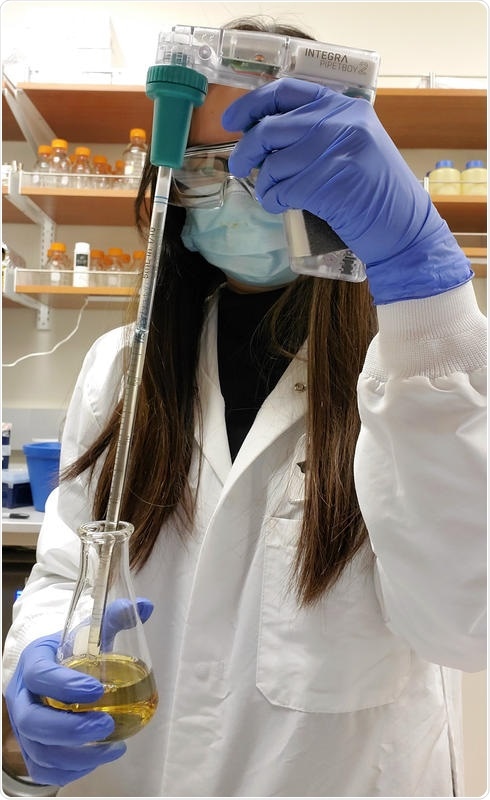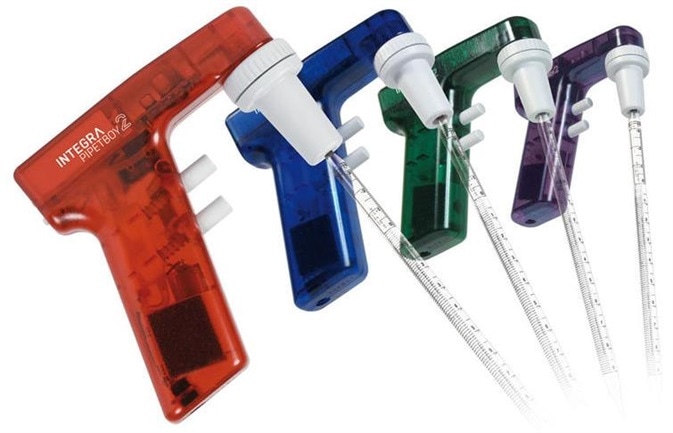Anion dysregulation is observed in a range of diseases, including autism, cystic fibrosis, chronic pain and cancer. Researchers based at the University of Dallas have been conducting investigations into anion transport in vivo.
The team has developed several novel tools for the analysis of normal and aberrant anion regulation impacts at the molecular level while employing the PIPETBOY acu 2 from INTEGRA to better streamline their cell culture workflows.
Whitney Ong is a joint chemistry graduate student based in the university’s Dodani and Smaldone labs. She outlined the purpose of this work:
“My research focuses on the development of supramolecular-based sensors for anions as part of a collaborative project between the two labs I am part of.”
In the Dodani Lab, we are interested in anion sensing and recognition – particularly for chloride – in biological systems and the wider environment, while in the Smaldone Lab, our focus is on organic and materials chemistry, creating new polymeric materials for applications in energy storage and 3D printing.”
Whitney Ong, Joint Chemistry Graduate Student, University of Dallas
Ong continues, “Working across the two groups means I’m part of a few different projects; splitting my time between developing a hydrophobic polymer for anionic recognition and engineering fluorescent proteins for anion sensing.”
This doesn’t just span multiple labs and disciplines, it also requires a wide range of laboratory techniques, including cell biology approaches, which is where the PIPETBOY acu 2 comes in.”
Whitney Ong, Joint Chemistry Graduate Student, University of Dallas
Streamlining cell biology workflows
Ong states, “The reason we are especially interested in chloride is that it is the most abundant anion in the human body – serving all sorts of functions – and its dysregulation is implicated in various diseases, such as cystic fibrosis (CF).
“The current gold standard for the diagnosis of CF is to analyze the sodium and chloride levels in a patient’s sweat, and so we are hoping that our chloride sensing platform could help in this detection, as well as in the diagnosis of a number of other diseases.
“Overall, we are largely studying many of the salts in the Hofmeister series. This is so we can do comparisons and see how selective they are when we use different sensors.
“As part of this research, I am doing a lot of work with protein expression, mutating the binding site of a fluorescent protein to see if it will work better for chloride sensing, and trying to create a turn-on sensor. This area of cell biology is where the PIPETBOY is really helping our workflows – saving a lot of time and improving accuracy.”

Image Credit: University of Dallas
Faster and safer cell culture set-up
The PIPETBOY acu 2 boasts a robust range of features that make it an ideal choice for labs looking to speed up workflows.
Increased pipetting speed is coupled with sensitive liquid control via finger pressure, alongside an ergonomic, lightweight design that is able to significantly reduce pipetting fatigue.
The PIPETBOY acu 2 can be charged in just 3.5 hours and is able to perform more than 6.5 hours of non-stop pipetting in a single run; meaning that it is able to support labs operating under extremely high throughput demands.
Ong elaborates: “We have three PIPETBOY pipette controllers – one red, one blue and one clear. We use them regularly for a variety of tasks when we are doing cell culture set-up, for instance, to make up large volumes of cell culture media, aliquoting and dispensing reagents such as media or antibiotics, resuspensions and mixing different solutions.”
If we are working with volumes of liquid above 2 ml, we will always use the PIPETBOY; it’s much easier, safer and more efficient that pouring liquids between glass measuring cylinders, where there is a much higher risk of spillages or not accurately pouring out the desired volume.”
Whitney Ong, Joint Chemistry Graduate Student, University of Dallas
Ong concluded: “They fit into our workflows perfectly – everyone in the lab loves them.”

Image Credit: INTEGRA Biosciences
About INTEGRA Biosciences
 INTEGRA provides innovative solutions for Liquid Handling and Media Preparation applications which serve the needs of their customers in research, diagnostics and quality control laboratories.
INTEGRA provides innovative solutions for Liquid Handling and Media Preparation applications which serve the needs of their customers in research, diagnostics and quality control laboratories.
Their instruments and plastic consumables are developed and manufactured in Zizers, Switzerland and Hudson, NH USA. In order to remain close to their customers, they maintain a direct sales and support organization in North America, the UK, France and Germany, as well as a network of over 100 highly trained distribution partners worldwide.
In recent years they have focused on developing a new and technologically advanced range of handheld electronic pipettes which are simple to use and meet the ergonomic needs of their customers. Today they are proud to offer the widest range of electronic pipettes in the market spanning a range from single channel pipettes up to 384 channel bench-top instruments.
Sponsored Content Policy: News-Medical.net publishes articles and related content that may be derived from sources where we have existing commercial relationships, provided such content adds value to the core editorial ethos of News-Medical.Net which is to educate and iform site visitors interested in medical research, science, medical devices and treatments.